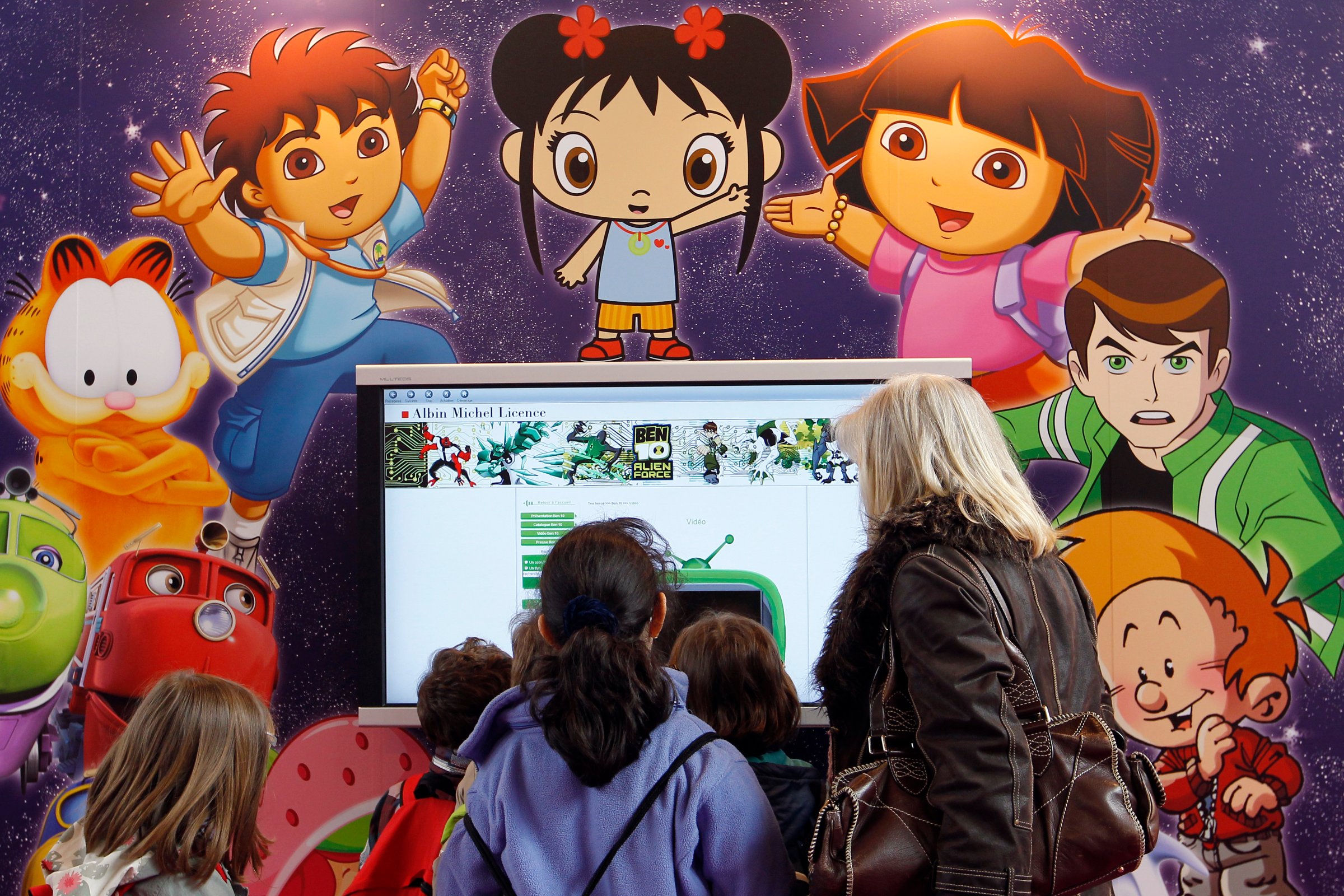
Childhood interaction with media used to be simple. Sit down in front of the TV when cartoons came on at 6 AM. Get up when mom wanted to watch General Hospital. The only thing that saved our feeble, developing brains was the Sesame Workshop. Sesame Street — and to a lesser extend 3-2-1 Contact and The Electric Company — taught us to read, spell, count, and be nice to furry puppets, all by sitting on our duffs.
The TV still counts, but its grip is slipping in an age when your toddler can rock some Monkey Preschool Lunchbox on the iPhone while checking out the latest episode of Dora on the iPad. How do you control the all-present screen? “It’s the adults who matter most in shaping environment,” says Michael Levine, PhD, co-author of Tap, Click, Read and executive director of the Sesame Workshop’s Joan Ganz Cooney Center. “Technology should extend and expand human relationships, rather than constrain them.”
If you don’t know the namesake of Levine’s center, Cooney was the groundbreaking producer who came up with the idea in the ’60s that preschoolers could actually learn to think from the idiot box. Today, her center is a non-profit that does research on all things digital, including when, what kind, and how much media time is appropriate for your little screen demon.
Fatherly: How A Guy Who Studies Non-Conformists Applies That To His Own Kids
Put Your Kids On A Digital Diet
“Kids between 3 and 5 are consuming between 3 and 4 hours of media a day,” says Levine. “The issue is how to balance the diet.” He says that the bottom of this digital food pyramid isn’t something digital at all: “It’s important for part of that pyramid to be media-free.”
“Cookie Monster knows that cookies are not an anytime food, they’re a sometime food,” he says. “Cookie knows he needs to eat his colors. There’s the equivalent of fruits and vegetables on the digital side. Reading and doing things that relate to intentional educational progress are the wholesome calories. There’s still room for a lot of treats, but for kids who are heavy media consumers and struggling in school, you need to rebalance the diet.”
Not All Screens Are Created Equal
The big key any time your child is face to face with a screen is that there’s more interaction than consumption. “There’s a big difference between sitting and watching, or playing with an app, and actively participating.” Levine says that Facetiming with the grandparents is some healthy media time, while another screening of Minions is the digital equivalent of a rice cake. “A 3-year-old who is parked in front of their iPad to play the game they love for 45-minutes, has a very different experience — not necessarily a bad experience — but a different experience than a 3-year-old who has a 25 or 30 minutes video chat. It’s what we call a ‘serve and return’ interaction. More passive, or inert, screen interaction is proven by research not to have as much benefit.”
Fatherly: I’m A High School Teacher And These Are The Worst Parents I’ve Seen
The 4 C’s
In the same way you can tell that broccoli is better for you than a Flaming Cheeto (because one has a flavor that exists in nature, and the other has the flavor of a Taco Bell commercial), you can judge the nutrition of kid’s media with a few guidelines:
5 Ways To Participate In Screen Time
“There are lots of ‘joint media engagement’ moments that are extremely powerful and successful for parents of young children,” says Levine. If you’re looking to make the daily grabbing for the phone a bonding time, try one of these apps:
Fatherly: The Complete Guide To Turning Your Kid Into A Computer Genius
Spend “No Screen” Time Wisely
Above all, read with your kids for 20 minutes a day — which is usually at night. That’s all they need to boost literacy skills. If your child looks like a junkie going through withdrawals when you take the iPad away, producers are trying to make that separation anxiety easier. “What I’m seeing now is the evolution of a new band of transmedia producers who understand that it’s TV plus games plus social, and are actually telling kids to unplug. Characters are getting tired inside the game. Screens are telling you to go outside and play.” And we all know Elmo is better at motivating your kid than you are anyway.
More Must-Reads from TIME
- Cybersecurity Experts Are Sounding the Alarm on DOGE
- Meet the 2025 Women of the Year
- The Harsh Truth About Disability Inclusion
- Why Do More Young Adults Have Cancer?
- Colman Domingo Leads With Radical Love
- How to Get Better at Doing Things Alone
- Michelle Zauner Stares Down the Darkness
Contact us at letters@time.com